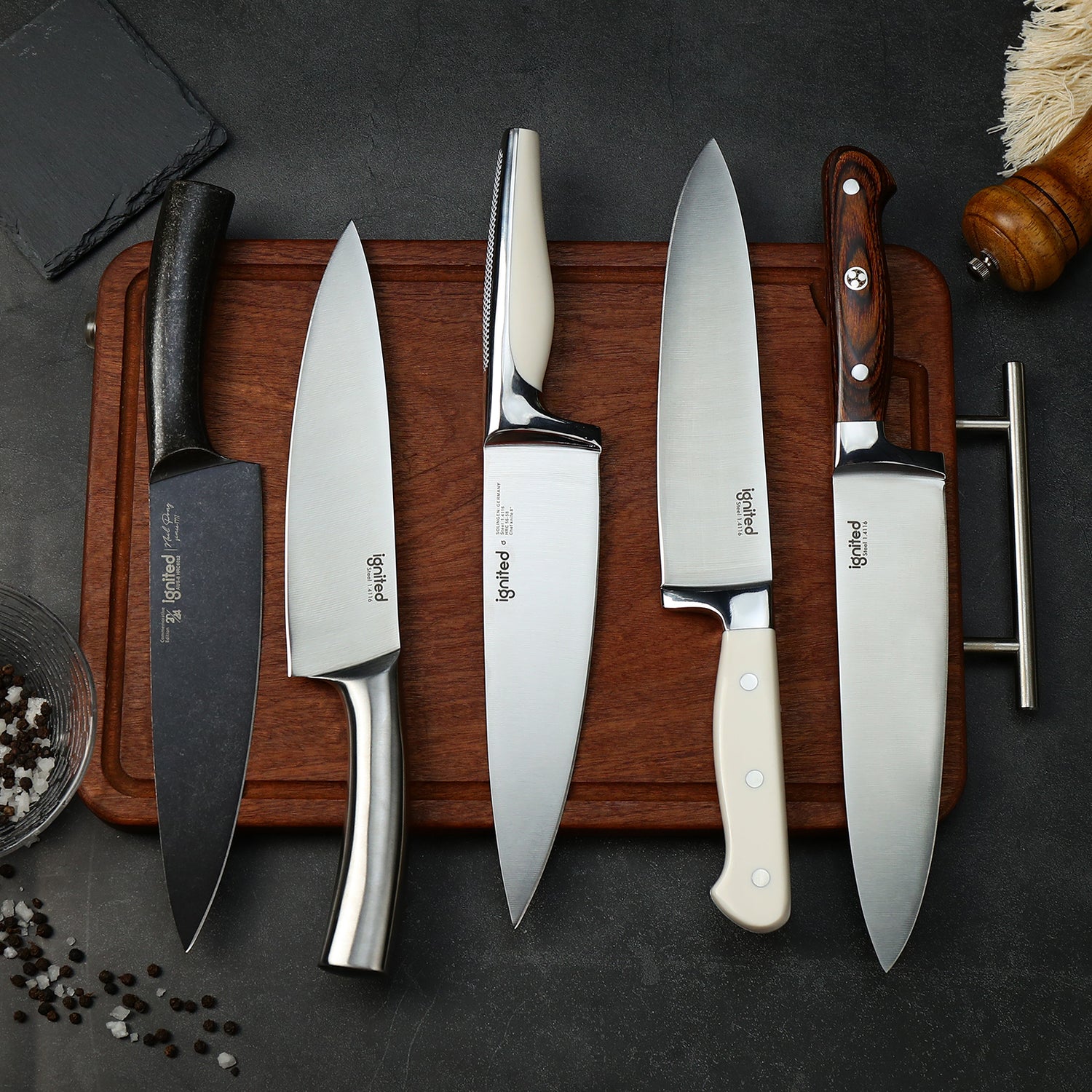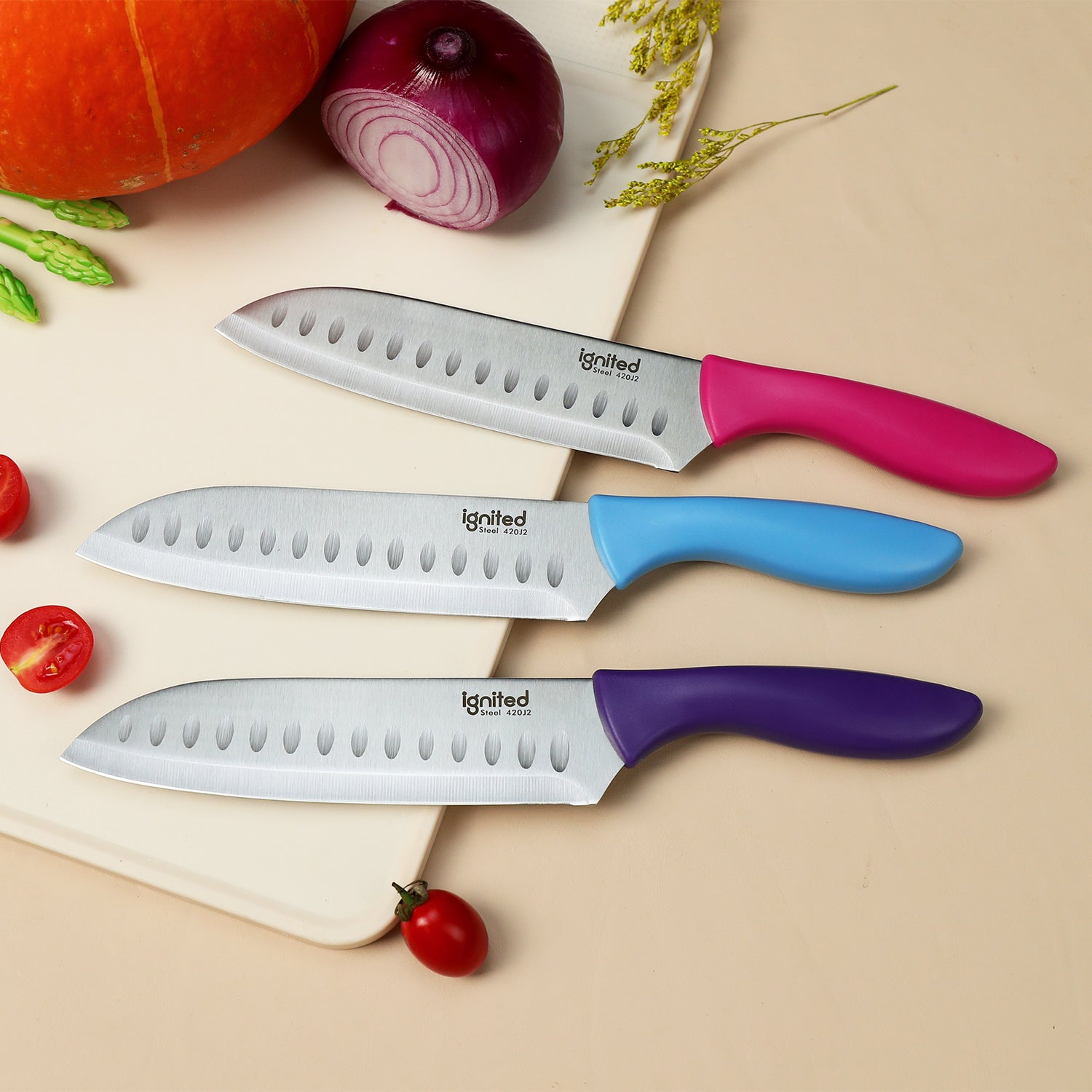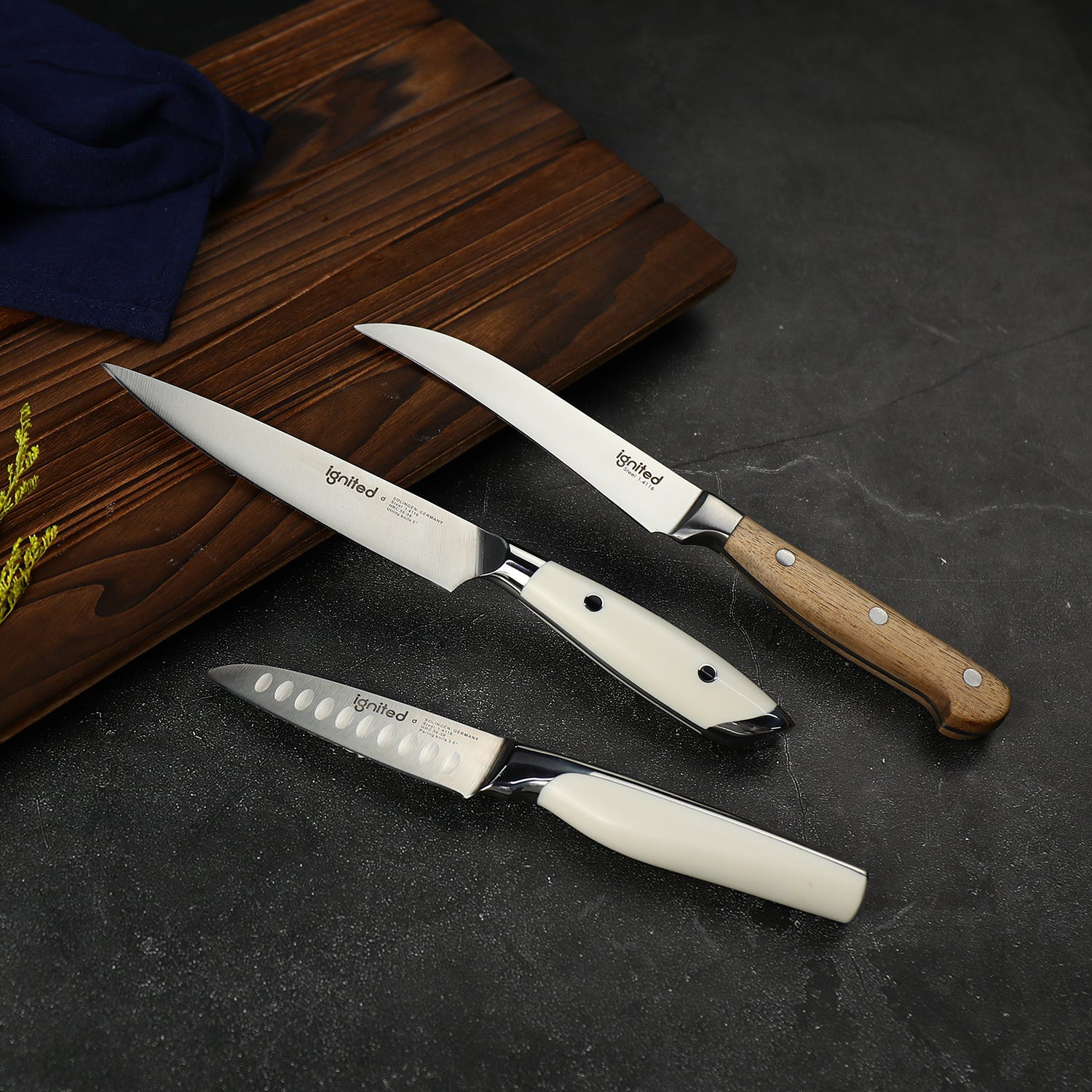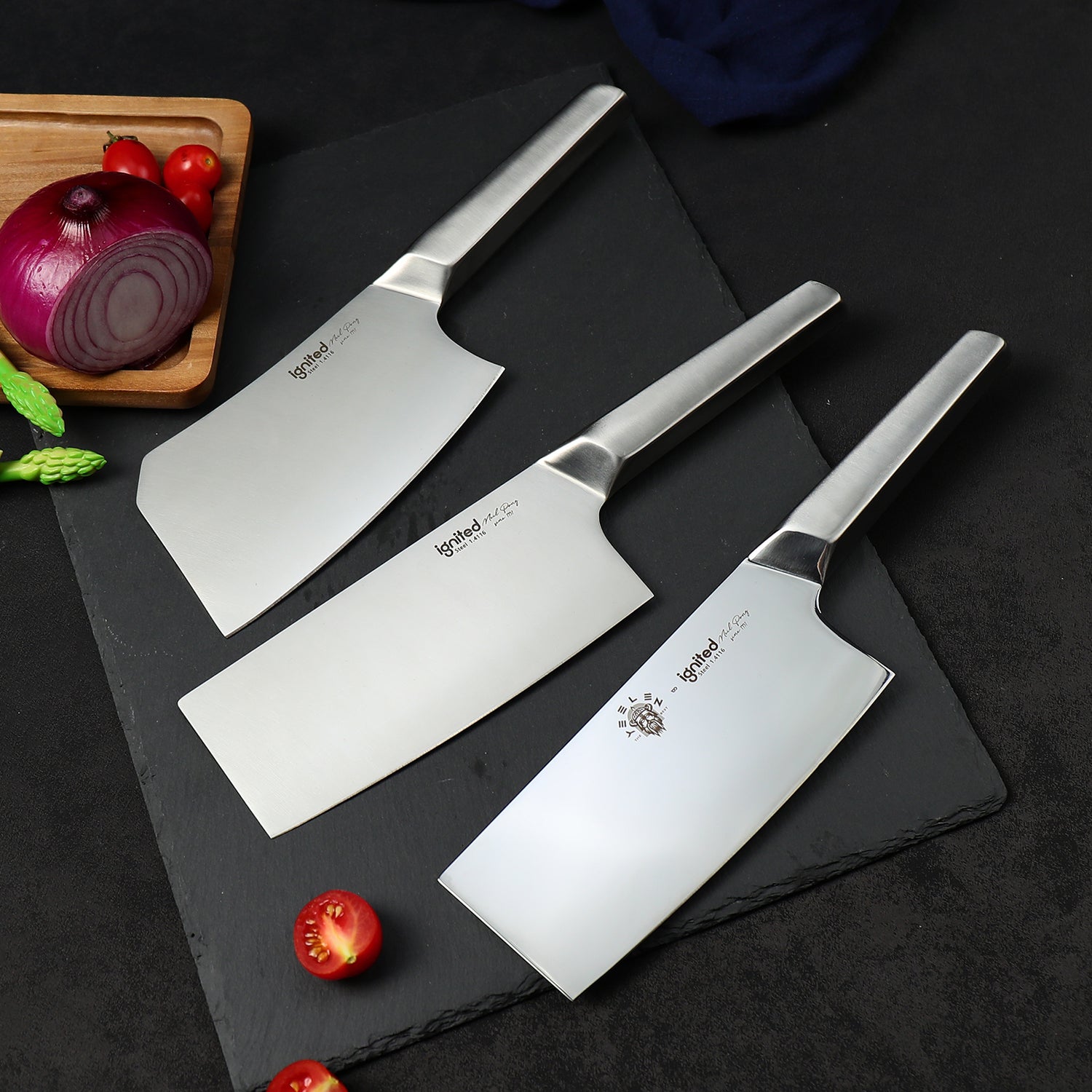A Guide to Different Cutting Board Types and What Your Knife Prefers
1. Wood Cutting Boards
Pros:
- Gentle on knife edges
- Self-healing surface (small cuts close naturally)
- Naturally antibacterial (especially maple and teak)
Cons:
- Requires regular oiling to prevent drying or warping
- Can be heavy and more expensive
Best for: High-quality knives used for chopping vegetables, slicing meats, or fine prep work.
2. Plastic Cutting Boards
Pros:
- Lightweight and inexpensive
- Dishwasher-safe and easy to sanitize
- Comes in various colors for food safety separation
Cons:
- Scars easily, can hold bacteria
- Not as gentle on blades as wood
Best for: Raw meats or quick meal prep. Replace when deeply grooved.
3. Bamboo Cutting Boards
Pros:
- Eco-friendly and sustainable
- Hard and durable
- Affordable
Cons:
- Tougher on blades, can dull faster
- Prone to cracking if not maintained
Best for: Sustainable-minded users. Not ideal for delicate or expensive knives.
4. Glass or Marble Cutting Boards
Pros:
- Easy to clean
- Doesn’t retain odors or stains
- Visually stylish
Cons:
- Extremely harsh on blades
- Unsafe due to slippery surface
Best for: Presentation only. Avoid for cutting.
5. Composite Cutting Boards
Pros:
- Dishwasher-safe and heat-resistant
- Durable yet relatively gentle on knives
- Non-porous surface
Cons:
- Still harder than wood
- Can be pricey
Best for: Users who want knife-friendliness with low maintenance.
What Type of Board Does Your Knife Prefer?
Wood is the best choice for preserving your knife’s edge. Whether it’s maple, walnut, or teak, a solid wood board provides the right balance of durability and blade protection. If you're looking for dishwasher-safe convenience, consider a composite board. Just say no to glass, no matter how elegant it looks.
Final Tips
- Use separate boards for raw meat and vegetables to prevent contamination.
- Keep your boards clean and dry after each use.
- Oil wooden boards monthly with food-grade mineral oil.
- Replace plastic boards when grooves become too deep.
Give your knife the care it deserves by pairing it with the right cutting surface—and it’ll stay sharper, safer, and more effective in your kitchen for years to come.




